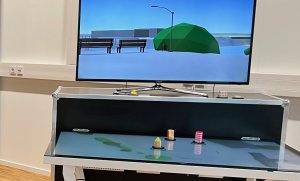Optimised Utilisation of Geospatial Data in Extended Reality Environments
Due to the performance improvements achieved and the use of low-cost sensor technology, the spread of extended reality (XR) approaches — including AR and VR applications — has increased considerably recently. XR approaches allow accessing and experiencing spatio-temporal information in a new quality of perception.
In addition to the proliferation of required hardware and software, geospatial data’s availability has significantly improved in the last decade, and many institutions have committed to the Open Data paradigm. Although freely created fictional virtual worlds are usually entirely modelled, mapping the natural world to a virtual representation can only be achieved through geospatial data, as the aimed authenticity requires high geometric accuracy. Various geospatial data levels in 2D and 3D exist globally and are essential for geospatial analyses and landscape planning.
To date, many potentials in integrating and visualising geospatial data have remained untapped. In the broadest sense, technical simplification of data integration in XR applications should be strived for new participation formats and accessibility for the public. In this context, the dissertation aims to provide a low threshold approach with which geospatial data becomes easily accessible in XR applications for researchers, land planners, and citizens.
